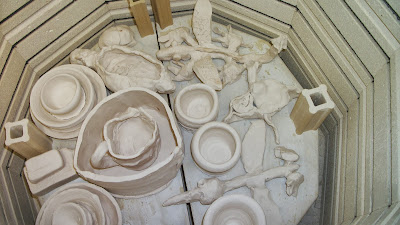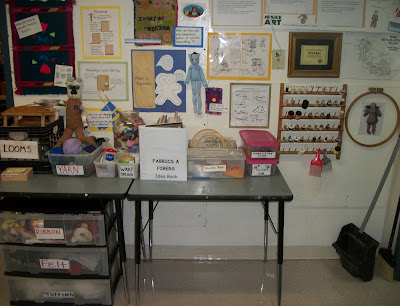Weapons, weaponry, violent action
drawings – these are subjects and themes that frequently appear in
middle school art – usually boy art. My colleague Clyde Gaw writes
extensively about this in “The Secret Art of Boys” (in The
Learner Directed Classroom, 2012,
Jaquith &Hathaway Eds.)
 |
| By "J" - Grade 6 |
When
students choose to make art about guns or violence there is an
opportunity to talk through these themes and
gain insight into why some
young artists find these
ideas compelling.
Often
a student will say: “I made this because guns are cool.” or
simply “I like guns.” Fascination
with weapons is not unusual. Social commentary about guns, at this
age, is. So I was very interested in a recent mixed media piece
(pictured above) titled “Y the Violence?” The artist's statement
created for the display of this piece reads: “I
don't know why people kill (that's the "IDK"). "LOL" is that I think
killers might think it's funny.”
 |
| Artist's Statement |
This
interested me – the artist used materials in an interesting and
deliberate way, created meaning, communicated an idea, and put
their work “out there” for others to see and respond.
I have
a reproduction of sculpture by Marvin Bartel pinned to the wall in
the Sculpture Center – a
piece I greatly admire. It was made in 1968 and depicts a rifle with
a long site, hanging broken from a coarse noose – a lynched rifle.
I asked my student if he ever noticed that photo, (he did not).
Together we looked at it, commented on the artist's possible
intentions, speculated about the year it was made (1968) and what might have
been going on during that time. I
told the student that 1968 was the year Martin Luther King was
assassinated and Robert Kennedy – Was Bartel "assassinating" the
rifle? Killing violence? Calling for an end to the shootings?
I know
that in some schools, depicting weapons is disallowed. And while it
is sometimes unsettling to see young students drawing and building
weapons, their interest in these provides an entry point to speak
about complex topics that hold relevance to this generation - conversations which
might otherwise be silenced.





















































